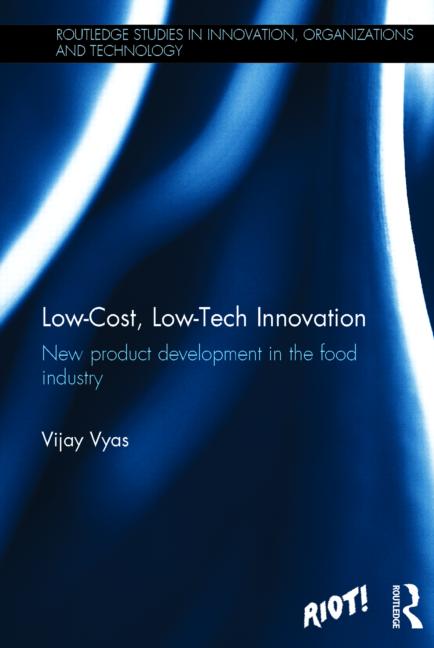R&D Seminar: Streamlining Product Development

Claims Validations as Part of New Product Development & Introduction (NPDI)
Nutritional claims regulation has many beneficial effects. It provides a higher level of consumer protection against false, misleading claims and can harmonize legislation across regions, such as EU regulation already does, to facilitate trade. Claims such as “reduced salt,” “energy free” and “high fiber” already exist as standards in EU regulation. In the U.S., there is great need for such automatic, immediately recognized claims validation.
In his R&D Seminar-East presentation titled, “Automating the Nutritional Claims Validation Across the NPDI Process,” Carlo Colombo, CEO, Selerant Corp., expressed the need for “leverage on nutritional claims to deliver consumer-relevant products.” He says the NPDI process can be streamlined with claims automated validation. This means regulatory compliance management, the main objectives of which have to do with ingredients, requirements, compliance rules and labeling.
Selerant Corp. has recently redesigned its web-based, scalable solution known as DevEX, a comprehensive modular platform that covers the NPDI and Product Lifecycle Management (PLM) processes. By looking at how clients expedite products to market, Selerant attempted to move the stage back one step further--from concept to actual implementation and initial start-up. By addressing the usability of a solution, everyday efficiency can be impacted, and the overall time-frame for a product’s lifecycle can be reduced.
DevEX is built on Microsoft’s .NET Framework 3.5, enabling a web environment that allows the user to instantly see data that would have previously required multiple steps. DevEX references a proprietary database of regulatory compliance issues that can be easily maintained and comes with a library of standardized claims for the U.S. (FDA Food Claims) and European Union Commission (EU Food Law).
Selerant has also enhanced the extended service-oriented architecture for even greater connectivity to legacy systems. This enables “a virtual seamless integration, with data flowing both ways for a real-time, accurate assessment of project and product status from Enterprise Resource Planning (ERP), regulatory, formula and financial standpoints,” as stated on Selerant’s website.
Utilizing DevEX, ingredients information is managed, including classifications, compositions and restrictions. Product requirements, such as target markets, market claims and nutrients, are identified. Compliance rules are managed, including legal and/or brand guidelines, and label generation includes multi-lingual, cultural and global rules.
The first stage, Product and Project Definition, aims to identify markets, guidelines and other regulatory requirements (i.e., vegan and organic). These requirements are used as validation targets during development. Based on target markets, the applicable regulatory guidelines will be used.
Stage two in the process is Product Development, which helps develop formulation and recipes, while maintaining online checks against the target requirements. A Visualization of Result summary is provided, including ingredients that may cause “non compliances.” Product developers can see precisely which of the guidelines are not met, says Colombo.
The third stage, Optimization, runs formula optimization against preliminary requirements. It then creates alternate recipes for different markets and finds the least-cost formulas within the product’s compliance boundaries. Once the recipe has been created, it can be optimized to a target (such as cost- or fat-reduction), given the necessary constraints. There is also the possibility of optimizing the formula by only changing some of the ingredients, within ranges.
The Formula Optimizer allows developers to identify alternate ingredients to which the constraints are applied. This enables developers to take the objective one step further. For example, more than just lowering the sugar content, they could select an alternate ingredient to substitute for the sugar. This specific selection would assist the optimization in meeting the target as directed.
In Scale-up, which is the fourth stage, labeling information is automatically generated. Such things as ingredient list, nutritional panels, allergens statement and dietary information are provided, along with an automatic translation of labels and a label approval route. A labeling functionality draws upon a user-definable table that allows corporations to define culturally sensitive ingredients, as well as proprietary alternatives. These will appear in the ingredient listing. This can group a proprietary formula within a recipe into a singular ingredient listing.
The last stage, Maintain Products, generates reports to identify non-compliant recipes upon rules changes, or an ingredient’s limit in use. Also generated are reports to identify trends, such as how many products became “healthy” within the last 12 months. Mass recipe changes and label data recalculations occur at this stage, as do “what if” simulations.
Another key functionality of DevEX is its Specifications functionality. This details every aspect of the product, down to labeling and packaging, and enables corporations to track each version of every document. Most importantly, the Specifications tool enables the user to upload and check in/out partial documents.pf
--Summary by Barbara T. Nessinger, Associate Editor
“Automating the Nutritional Claims Validation Across the NPDI Process,” Carlo Colombo, CEO, Selerant Corp., 718-260-8037, carlo.colombo@selerant.com, www.selerant.com
Do’s and Don’ts of Effective NPD
For effective new product development (NPD), it is all about doing the right thing (with the product) in the right way (the process). If the desired end-results are speed-to-market, a high success probability and optimal resource utilization, then Allan Samson, Ph.D., of ESCA Enterprises Inc., has the formula for success.
In his R&D Seminar--East presentation titled, “Do’s and Don’ts of Effective New Product Development,” Samson, principal of ESCA Enterprises, outlined his objective as “to identify development tactics that assist or hinder the effective development of new products, successfully.” According to Samson, the best efforts of R&D teams focus on truly novel products. They also cope with shorter development times; allow partnership with external resources/suppliers; and contribute to the growth and profitability of the organization.
Factors that create barriers to effective NPD can be both internal and external. Internal barriers that may affect NPD include corporate, marketing, operations, R&D and procurement obstacles. Corporate barriers can involve conflicts in organization objectives; internal product priority conflicts; and the absence of a multi-functional approach, according to Samson. Also, having no development strategy; inconsistent management involvement; and a lack of feedback and evaluation are hindrances to success.
Marketing internal barriers include incomplete product definition, which Samson calls the “I’ll know it when I see it,” mindset towards development. He also cites non-existent R&D input, too many samples and meaningless timelines as other internal marketing issues.
Internal operations barriers consist of force-fitting the product to the process; additive operations variances; too many tolerances and specifications; non-adherence to process; and the “cost vs. value” conundrum. R&D negative barriers, says Samson, include showing an “unrealistic” product; accepting an unrealistic request; having someone’s influence based on their position, rather than their knowledge; and activity vs. accomplishment.
Procurement mistakes consist of the following: contract bidding, bait-and-switch tactics; ingredient substitution; incomplete information; disregard for supplier resources; and cost savings vs. product integrity.
Samson also named four external areas that could be barriers to effective NPD: vendors/suppliers, regulatory, retailers/customers and consumers. Vendor/supplier barriers include bait-and-switch; price/cost increases; formula ownership; formula modification; and confidentiality issues. In the regulatory arena, external problems can consist of hurdles to innovation, attitudes to product/label reviews and an honest manufacturer vs. a “tricky” one.
Retailer/customer external barriers include, again, what Samson terms, “I’ll know it when I see it;” bait-and-switch; cost and profit parameters; and volume vs. cost concerns. In the same vein, consumer problems occur in the form of complaints, liability, responsibility and what he calls “real vs. other.” This refers to the fact that sometimes, retailers play one supplier against another, in order to get a cheaper price for the same (or similar) product. “A good R&D person should be able to identify and eliminate this,” says Samson, “as it would be a waste of resources and ineffective product development.”
So, why do products fail? Samson states there are six main factors that retard effective NPD: being all things to all people; consumer complaints; procurement mandates; contract products; operations mandates; and customer mandates. When everything is “in a panic,” or “top priority,” NPD will be ineffective. He also names never-ending projects and duplication of efforts (both internal and external), as well as slow decisions with fast changes, as detrimental to a product’s eventual success.
Another issue is the “golden palate,” a syndrome that refers to people in positions of power and influence asserting their personal preferences into what a product should be. These opinions may be diametrically opposed to the product attributes desired by consumers. pf
--Summary by: Barbara T. Nessinger, Associate Editor
“Do’s and Don’ts of Effective New Product Development,” Allan Samson, Ph.D., principal, ESCA Enterprises Inc., 610-558-1902, esca@mindspring.com, www.escaenterprises.com
Looking for a reprint of this article?
From high-res PDFs to custom plaques, order your copy today!





